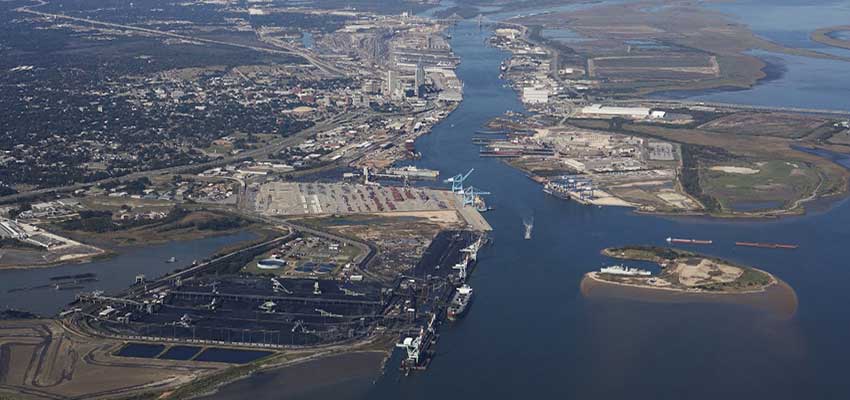Economic Snapshot Overview by Dr. Reid Cummings - October 2020
Posted on October 28, 2020 by Dr. Reid Cummings

Greetings, and welcome to the October 2020 Mobile Bay Economic Snapshot.
Recent Snapshot issues featured stories about how the coronavirus has not only affected but also changed our lives and habits. In July, we looked at the incredible performance of Baldwin and Mobile County residential real estate markets. With inventory levels and interest rates at their lowest points in years, agents reported that properties on both sides of the Bay were selling so fast that multiple-offer situations were increasingly common. With more buyers looking to enlarge their residential footprint but fewer wanting to take on extensive renovations, homes with multiple living spaces in ready-to-move-in shape were most in demand.
In August, we examined air passenger traffic at Mobile and Pensacola airports. Mobile Airport Authority President Chris Curry told us that although traffic levels declined as much as 90% in April, recovery was clearly underway as passenger flight numbers were moving higher, rising to 50% year-over-year levels by late summer. Pensacola International Airport Executive Director Matt Coughlin said their positioning was key, as the airport continues to see triple benefits from leisure, business, and military passenger travel.
In September, we focused on regional commercial real estate markets. Going into the story, admittedly we expected a spate of negative news, but the data told us a different story. Commercial agents helped us better understand the dynamics of what was driving improving sales activity. Retail and hospitality properties were unexpectedly holding steady, restaurant outlets with drive-up and curbside capabilities were doing well, and the industrial warehouse and distribution markets were hotter than ever.
With regional economic news better than intuition would suggest, we started thinking about how the economy was faring in a broader sense. Using U.S. Bureau of Transportation Statistics data to help us tell the story, this month we examine how the coronavirus has affected the movements of people and goods across the nation.
Clearly, the pandemic shook the airline passenger industry to its core. In July 2018 and 2019, annual passenger travel peaked at 72.5 and 75.3 million passengers, respectively. From April 2020 lows, traffic rose, but remained low in July 2020 at 20.3 million passengers.
Passenger rail travel follows a similar pattern, typically peaking in the summer. In July 2018 and 2019, rail passengers totaled 3.06 and 3.11 million passengers, respectively. As with air travel though, July 2020 saw far fewer passengers, registering less than 573,000 passengers.
Summer travel by car is also typically higher than at other times of the year. Vehicle miles driven totaled 291 and 296 billion in 2018 and 2019, respectively. Though just as with air and rail passenger travel, Americans traveled less by car after the pandemic. Even so, this summer, many more people preferred hitting the open road to traveling by plane or train, logging over 262 billion miles in July 2020.
The movement of goods by rail and water follows generally consistent patterns before and after the coronavirus landed in the United States. Truck freight has held steady as well yet dipped significantly in March 2020. Although it has risen, still, it remains below its averages, perhaps explained by drivers’ concerns about dangers presented by cross-country travel during the pandemic.
The data show significant increases in movement of goods by air. Understandably, air freight activity peaks in December, as Americans hurry to complete their Christmas shopping. But the coronavirus has pushed air freight volumes to new highs, rising steadily to surpass even the December highs of the last two years. This statistic makes sense and seems to be in line with so many reports of Americans more often turning to online outlets in recent months.
The overarching story is that while individual travel remains somewhat curtailed, America’s supply chains have seemingly rebounded from the lows experienced earlier in the year. This is welcome news not only for the national economy, but for the thousands of local and regional economies nationwide which depend on the flow of goods. Local supply chain activity has been buoyed by manufacturing and e-commerce and future prospects appear bright. David Rodgers, Mobile Area Chamber of Commerce Vice President of Economic Development, reports “continued interest and investment in warehousing and distribution operations.”
Nearly 10% of our regional economy is driven by supply-chain related functions. Because of the importance of developing a broader understanding of how this critical activity interacts with other sectors of our economy, the Mitchell College of Business recently began offering students a new major opportunity in Supply Chain and Logistics Management. Without question, the driving force behind this initiative has been Dr. Alvin Williams, Distinguished Professor of Marketing. We asked him to tell us why this is so important for both students and industry.
“Our new major harnesses and leverages the supply chain and logistical strengths of our region to develop a market-driven academic program, capable of complementing the economic development momentum of this area. This academic-business partnership represents a unique opportunity to build on an already strong supply chain infrastructure to make it even more robust. An added bonus to our supply chain efforts in the region is the proposed Mayer Mitchell Center for Intermodal Supply Chain and Logistics. The Center will offer a comprehensive approach to supply chain education, research, and professional engagement and will be a one-stop shop for all things supply chain-related in this market space.”
We say, well said Alvin, and well done! How fortunate we are to live, learn, and work in an area that is so beautiful and welcoming, offers so many opportunities, inspires innovation, nurtures entrepreneurship, and each day attracts new talent and expertise.
Until next time, from everyone at the Center, we wish you and yours all of the best.


